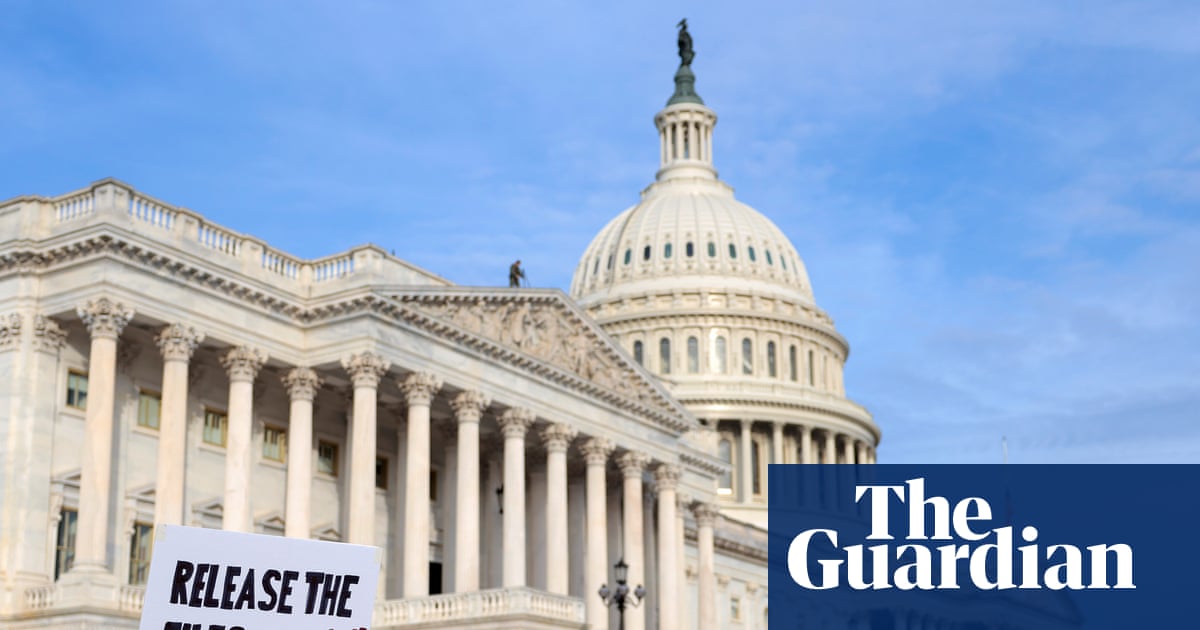Since ordering the Pentagon in January to erect a U.S. missile defense shield partly based in space, President Donald Trump has claimed that it would be completed by the end of his term and cost $175 billion. His signature national security effort will have close to a 100 percent success rate, he has pledged, “forever ending the missile threat to the American homeland.”
But the White House and Pentagon have revealed scant details of the “Golden Dome” project, which defense and budget analysts say is likely to take at least a decade to complete and cost a trillion dollars or more.
Golden Dome would radically reshape military doctrine and further militarize space, an effort that’s been compared to the rush to build the atomic bomb during World War II and the Apollo moon landings. Yet it still may not come close to providing the kind of comprehensive protection Trump says it will.
Marking a historic break from decades of nuclear deterrence, it would either remedy a glaring vulnerability to the U.S. homeland or ignite an arms race in orbit that could last a generation or more.
Critics deride the most ambitious part of the program - flooding low Earth orbit with thousands of satellites to detect and take out adversaries’ missiles - as a fantasy that will only destabilize the fragile international order that has prevented nuclear war for more than 70 years.
“Golden Dome could be the single most dangerous idea Trump has ever proposed, and that’s saying something,” Rep. Seth Moulton (D-Massachusetts), a member of the Armed Services Committee, said in an interview.
Proponents counter that because of expanding threats, as well as dramatic technological advances, the time is right to resurrect the Reagan-era Strategic Defense Initiative, known as “Star Wars,” that fizzled out at the end of the Cold War. For years, defense hawks have pushed for a more robust missile-defense shield, citing the unsettling truth that the United States doesn’t have a comprehensive way to protect its homeland.
China and Russia, meanwhile, are already expanding their nuclear arsenals in the largest long-range weapons buildup since the Cold War. They are adding hundreds of intercontinental ballistic missiles as well as new weapons systems, including hypersonic weapons designed to speed toward U.S. cities at more 4,000 mph, according to intelligence officials.
The United States has neglected its homeland missile defense systems, said Tom Karako, director of the Missile Defense Project at the nonpartisan Center for Strategic and International Studies (CSIS). The $25 billion Trump dedicated to Golden Dome this year is a “down payment to blot out the years of inattention to this. We’ve known these threats are coming,” he said during a CSIS event. “It’s long overdue.”
- - -
A limited defense
The nation’s existing long-range ballistic missile defense system is designed to track an enemy missile when it is launched and follow it through its “boost phase” into “midcourse phase” as it travels toward U.S. territory.
The U.S. deploys sophisticated “kill vehicles” from bases in Alaska and California to target incoming enemy missiles.
The current system is only designed to thwart a small number of missiles from North Korea, not an attack from China or Russia.
Once an incoming missile is detected, the U.S. would probably fire at least two missiles to attempt to intercept it.
There have been several tests of this existing system in which the kill vehicle didn’t hit anything.
Potential adversaries say they view Trump’s plan as an aggressive escalation.
China said it will “heighten the risk of turning space into a war zone and creating a space arms race and shake the international security and arms control system.” Mao Ning, a spokesperson for the Chinese Foreign Ministry, said at a news conference, “We urge the U.S. to give up developing and deploying [a] global antimissile system, and take concrete actions to enhance strategic trust between major countries and uphold global strategic stability.”
Golden Dome would be modeled, at least in theory, after Israel’s Iron Dome, which has proved robust against attacks for years. But Israel’s missile defense only protects against short-range missiles, in an area about the size of New Jersey. Golden Dome would have to protect the entire U.S. from intercontinental ballistic missiles that could be carrying multiple nuclear warheads.
An analysis by the Congressional Budget Office forecast the cost of deploying space-based interceptors alone would cost $542 billion over 20 years. But that amount would only allow the Pentagon to defend against one or two missile launches from a rogue attack from North Korea. To expand the system to counter a larger number of threats, some experts predict it could become one of the most expensive initiatives in the Pentagon’s history.
Todd Harrison, a senior fellow at the American Enterprise Institute, has calculated that a robust defensive architecture for Golden Dome could cost as much as $3.6 trillion over 20 years.
In May, Trump appointed Space Force Gen. Michael Guetlein to oversee the Golden Dome effort, handing him what is perhaps the most difficult job in Washington. When Trump pledged that the program could be completed in three years for $175 billion, Harrison said, “He bounded the initiative in such a way that it’s impossible to meet all those expectations. They just don’t add up.” Guetlein, he added, now has “to figure out how close he can come. The question is, where do you let the president down?”
With the project still in its infancy, it’s not yet clear which agency will lead Golden Dome. But the money behind the effort has already sparked a race between U.S. defense contractors - from Lockheed Martin to Booz Allen Hamilton and L3 Harris - who are eager to capitalize on what could be a once-in-a-generation spending spree. Defense officials have made it clear that they also want contributions from tech companies, such as Anduril, Palantir and SpaceX, that have driven innovation.
“If we want to use space effectively, we have to be ready to fight for it,” Gen. Chance Saltzman, the Space Force’s chief of space operations, said in an interview. “These are not emerging threats. These are threats that are on orbit. They are on the ground now and they are holding our assets at risk.”
- - -
A low success rate
The Pentagon operates several different missile defense systems, including Aegis, THAAD and Patriot, which are designed to thwart short- to medium-range missile attacks and used to protect U.S. military bases abroad. To safeguard the U.S. homeland, the military relies on what is known as the “ground-based midcourse defense system,” which is composed of just 44 interceptor missiles loaded like bullets in white-domed silos buried in the tundra of Alaska’s Fort Greely and along California’s coast at Vandenburg Space Force Base.
If a missile attack were detected, the domes would crack open and out would shoot a multistage rocket, trailing a tail of fire. As it flew toward the target, satellites would continue to relay data - how fast the incoming missile is traveling, its altitude and trajectory, while radar stationed on the ground and at sea would do the same.
Once in space, the U.S. interceptor would release a strange-looking spacecraft, 4½ feet long, weighing 144 pounds, with thrusters and fuel tanks and a sensor that sticks out like a horn. Odd though it may look, the “exoatmosphere kill vehicle,” as it is called, is designed to hunt its prey by whizzing through space at thousands of miles per hour and then destroy incoming missiles by colliding into them - a feat that experts say is akin to “hitting a bullet with a bullet.”
In the 20 tests conducted since 1999, however, the kill vehicles have missed their targets about as often as they’ve hit them, succeeding just 55 percent of the time, according to a report by the American Physical Society, a scientific nonprofit.
And even then, the tests haven’t always accurately simulated real-world conditions. The trials “have been conducted under scripted conditions and designed for success,” the report said. “The Pentagon has consistently rated the tests as low in operations realism.”
The costs have been enormous. The U.S. has spent more than $350 billion on efforts to defend against nuclear-armed intercontinental ballistic missiles over the past 60 years, according to Laura Grego, a research director at the Union of Concerned Scientists. The effort, she’s written, “has been plagued by false starts and failure, and none have yet been demonstrated to be effective against a real-world threat.”
Given the immense difficulty of hitting missiles well into their flight, military leaders have long sought to target them shortly after launch, during what’s known as “boost phase” when their engines are still firing and they’re easier to see. Under Golden Dome, interceptors would be stationed in low Earth orbit and quickly swarm to the target during the short boost phase, kamikaze style.
During Reagan’s Strategic Defense Initiative, the space-based interceptor program was called “Brilliant Pebbles.” But in the 1980s, launching and operating constellations of small satellites was dismissed as science fiction, which is one of the reasons Reagan’s plan was derided as “Star Wars” and ultimately ended up failing.
Since then, satellite technology has made enormous progress while the costs to launch spacecraft has dropped dramatically. With its Starlink internet satellite system, which comprises more than 8,000 operational spacecraft, SpaceX has demonstrated that it’s feasible to operate a large constellation and to launch rockets at a high rate. It sent up more than 130 rockets last year, and it’s aiming for more this year.
- - -
How Golden Dome’s space interceptors would work
A key component of the proposed “Golden Dome” system is to bolster defenses with an extensive array of orbiting kill vehicles.
Such a system would be ready to intercept an incoming missile much earlier, possibly during its “boost phase.”
Multiple orbiting interceptors could be deployed against an attack, making success more likely.
“Physics hasn’t changed,” said Clayton Swope, the deputy director of the aerospace security project at the Center for Strategic and International Studies. “But what has are launch costs are so much lower and we’ve shown we can operate constellations of satellites in orbit. That was a question as recently as 10 years ago.”
At the same time, threats have grown and they will continue to “expand in scale and sophistication,” according to the Defense Intelligence Agency, During the Cold War, the U.S. was focused on a single adversary: the Soviet Union. Today, a host of other nations beyond Russia - including China, North Korea, Iran and Pakistan - have access to long-range missiles, and a total of nine countries possess nuclear weapons.
China is on track to nearly double the number of its ICBMs by 2035 and quintuple its arsenal of cruise missiles, according to the DIA. Russia is also expanding its missile caches, the report said. And both countries are working to develop new long-range weapons systems, including hypersonic vehicles, which can maneuver and fly at speeds greater than Mach 5, making them difficult to track and target.
For decades, the U.S. has relied on a doctrine known as “mutually assured destruction”: Any launch of a nuclear missile toward the U.S. would result in a devastating U.S. counterattack. But given the arms race already underway, Golden Dome proponents argue, the U.S. needs stronger defense systems to deter the new threats.
In addition to defending against missile strikes, Swope said, Golden Dome could serve as a Swiss Army Knife-like tool that could be used to attack other satellites or target rockets launching military payloads. It would, he wrote in a report, “immensely enhance U.S. space superiority beyond missile defense alone and create a potent deterrent effect.”
In an interview, he said: “We hear about warfighting in space, but now we’re talking about war fighting from space.”
- - -
A constellation of satellites
In the end, it’s the sheer math of Golden Dome that is giving many experts pause. It would require a mind-boggling constellation of satellites in orbit to ensure that there was one in range of a missile attack at any time, defense analysts say. It would take “about 950 interceptors spread out in orbit to ensure that at least one is always in range to intercept a missile during its boost phase,” according to Harrison, the senior fellow at AEI.
If an adversary launched 10 missiles, it would require at least 9,500 interceptors in space.
Others have said the numbers are even higher. The American Physical Society estimates that 16,000 interceptors would need to be stationed in orbit to take out an attack of 10 ICBMs.
“You need so many more interceptors than missiles, it becomes operationally impractical,” Harrison said.
- - -
Vulnerability in space
Making Golden Dome work as advertised would entail a large number of satellite deployments at an enormous cost.
Even were this arrangement to prove as robust as Golden Dome’s proponents envision, it would still present a theoretical Achilles’ heel.
Such a dense pattern of orbiting satellites could be vulnerable to threats from, say, a nuclear detonation in space, which would knock out many of the Golden Dome weapons as well as generating a Kessler cascade of destructive orbiting debris that could silence the entire network.
Without a complete blanket of security, deterrence will remain the most crucial principle, said Doug Loverro, who served in various roles at NASA, the National Reconnaissance Office and the Pentagon, including as deputy assistant secretary of defense of space policy.
If flooding Earth orbit with thousands of suicide satellites isn’t feasible, the Pentagon could make real progress building out its ground-based systems well beyond the 44 interceptors it already has, he said. But even that would not give the U.S. total protection.
“Everyone knows we’re not going to be able to intercept a mass strike,” Loverro said. “The question we have to entertain is how many missiles do we have to defend ourselves against in order to get the nuclear saber rattling to back down?”
Related Content
Through pet sketches, she tells the stories of former federal workers
What it was like to fly into Hurricane Melissa’s eye
Consumer prices in September rise to a pace not seen since January

 German (DE)
German (DE)  English (US)
English (US)  Spanish (ES)
Spanish (ES)  French (FR)
French (FR)  Hindi (IN)
Hindi (IN)  Italian (IT)
Italian (IT)  Russian (RU)
Russian (RU) 























Comments